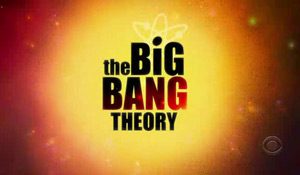The Universe is getting bigger!
But then, we knew this. We’ve known it for a long time! The reason you know Edwin Hubble’s name at all is because in the 1920s he was critical in figuring out the Universe was expanding. He and many other people did this by looking at a specific kind of star, called Cepheid variables. These stars literally pulsate, getting brighter and dimmer on a regular schedule. As it happens, how much they change in brightness depends on their actual brightness… and that means if you measure how much they change, and how bright they appear in our sky, you can figure out how far away they are. And if they are in other galaxies, then you can tell how far away those galaxies are.
Boom! You can measure the size of the Universe. And more.
Using this method (which I explain in more detail in an earlier post, if you want details), they figured out the Universe was expanding - the farther away a galaxy is, the faster it appears to recede away from us. This is what led to the Big Bang model of the Universe, and essentially all of modern cosmology - the study of the origin, evolution, and properties of the Universe as a whole.
Over the decades, that rate of expansion - called the Hubble Constant - has been measured many different ways. Using Cepheid variables is still a foundation of the work, though, and a new study just released by astronomers using the Spitzer Space Telescope show that the rate of expansion is 74.3 +/- 2.1 kilometers per second per megaparsec. What this means is that a galaxy one megaparsec away (that is, 3.26 million light years) will be moving away from us at 74.3 km/sec. If you double the distance to 2 megaparsecs, a galaxy would be moving away at twice that speed, or 148.6 km/sec.
This study is pretty neat. Spitzer observes in the infrared, which can pass right through interstellar dust. That dust is like a fog, obscuring the visible light from stuff behind it, and it really messes with measuring brightnesses. That has plagued Cepheid studies for years, but Spitzer simply steps around that problem! So this measurement appears to be pretty accurate, more so because they calibrated it using Cepheids in our own galaxy (and one nearby one), and combined it with results from other observatories like WMAP, which can measure other properties of the Universe as well. By doing all this, they’ve produced a very accurate measurement of the Hubble Constant.
I want to be clear here: this new study is more accurate than previous ones, and much more accurate than one done a few years ago using Hubble. However, a study done just last year got the expansion rate to an accuracy of about 3.3%, and that used a combination of Cepheids and Type Ia supernovae - a star that explodes with a measurable and predictable brightness. This new study has an accuracy of just under 3% - an improvement for sure, though not a huge one over last year’s.
 Still, this is very cool. That last study got a rate of 73.8 +/- 2.4 km/sec/megaparsec, so they both agree closely within their error margin. In fact, they’re statistically identical (and agree with quite a few other measurements made in the past, too). That’s good! It means we’re really nailing this number down, and that’s further evidence we really do have a pretty good basic understanding of how the Universe is expanding.
Still, this is very cool. That last study got a rate of 73.8 +/- 2.4 km/sec/megaparsec, so they both agree closely within their error margin. In fact, they’re statistically identical (and agree with quite a few other measurements made in the past, too). That’s good! It means we’re really nailing this number down, and that’s further evidence we really do have a pretty good basic understanding of how the Universe is expanding.
There’s still a lot to figure out in cosmology; we don’t know what dark matter is, and about dark energy we know even less. But it’s good that people are looking into other ways to measure basic properties of the Universe. The more we know them, the less we have to worry about them. And it shows that our overall model holds up. The Universe had a beginning, 13.7 billion years ago. It was small then, but it’s been expanding ever since, and in fact is expanding faster every day. We are a small part of it - in fact, our matter is a small part of all the matter (that dark stuff dominates by a lot) and even that is a small part of the stuff that makes up the Universe (dark energy wins that round).
And as amazing as all that is, I am even more astonished by the fact that we can know any of this at all! The Universe obeys rules, and by doing so reveals those rules to us. We just have to be smart enough to investigate them and learn about them.
And we are that smart.
Image credits: Image credit: NASA/JPL-Caltech; CBS
Related Posts:
- The Universe is expanding at 73.8 +/- 2.4 km/sec/megaparsec! So there.
- The Universe is expanding at 74.2 km/sec/Mpc
- Wait a sec. How big is the Universe again?
- The Universe is 13.73 +/- .12 billion years old!